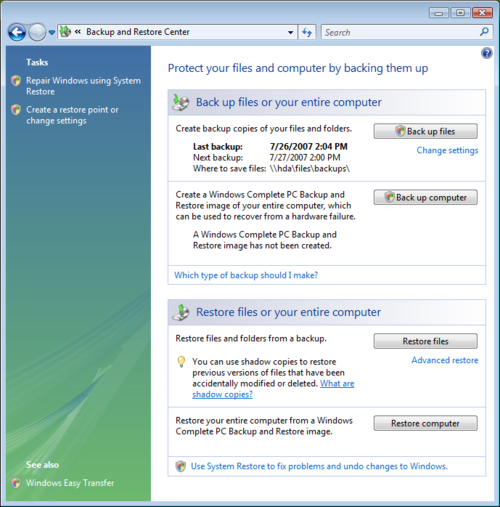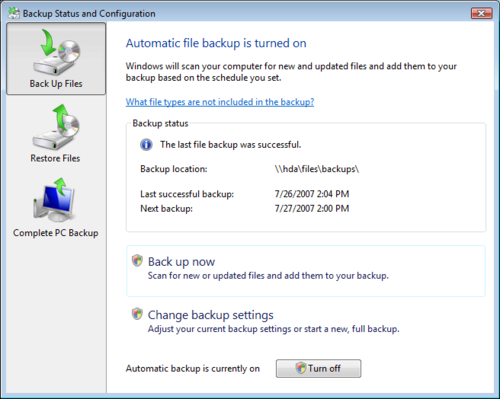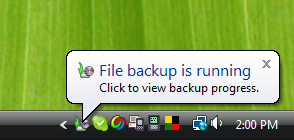Difference between revisions of "Windows Backups"
m (moved VistaBackups to VistaWindows7Backups: No need for redundant page) |
|||
| Line 1: | Line 1: | ||
| − | If you use Windows Vista, | + | If you use Windows Vista, Windows 7 or Windows 8, there is a built-in, straightforward way to backup your files (not the OS) regularly to the HDA. |
| − | To use it, go to the Backup and restore Center (Start -> Control Panel -> Backup & Restore): | + | To use it, go to the Backup and restore Center (Start -> Control Panel -> Backup & Restore). In Windows 8, You can launch the backup from the Control panel: |
[[Image:VistaBackups1.png|border|500px]] | [[Image:VistaBackups1.png|border|500px]] | ||
| Line 20: | Line 20: | ||
It saves your files in the form of zip files, to they are easy to recover, even without using the vista "Restore Files" program. | It saves your files in the form of zip files, to they are easy to recover, even without using the vista "Restore Files" program. | ||
| + | |||
| + | For step-by-step details for Win7 and Win 8, check the [[Win7Backups]] page. | ||
Revision as of 21:17, 2 September 2012
If you use Windows Vista, Windows 7 or Windows 8, there is a built-in, straightforward way to backup your files (not the OS) regularly to the HDA.
To use it, go to the Backup and restore Center (Start -> Control Panel -> Backup & Restore). In Windows 8, You can launch the backup from the Control panel:
In it, you can configure settings (in "Change settings) to make Vista do backups to your HDA daily, weekly or monthly.
All you have to specify is that you want to backup to the network, e.g. to
\\hda\backups\[machine]
Where [machine] is your machine name.
The first time it runs it will back up all your files. Subsequent backups are incremental: only what changed since last backup is saved.
It saves your files in the form of zip files, to they are easy to recover, even without using the vista "Restore Files" program.
For step-by-step details for Win7 and Win 8, check the Win7Backups page.



